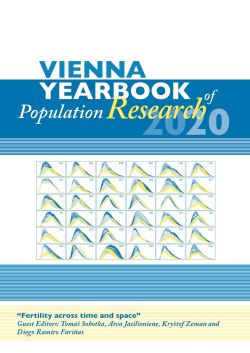
Vienna Yearbook of Population Research 2020, pp. 141-166, 2020/08/04
Fertility across time and space

Building on the well-established knowledge on fertility differentials by education and nativity/migration status, we employ microsimulation modelling to demonstrate the effect of accounting for such differences in population projections. We consider fertility differentials by educational attainment, enrolment in full-time education, region of birth, age at immigration, and duration of stay in the host country, which we introduce step-wise into the microsimulation model for the EU28. Results on projected TFRs and births by 2060 illustrate the importance of accounting for several sources of population heterogeneity. In the context of future educational expansion, modelling education differentials for students and for women with completed education is needed to capture the postponement effect of education on childbearing. Future migration assumptions that include migrant fertility differentials lead to widely varying projected numbers of future births. At fixed fertility differentials and a fixed composition of immigrant flows, the net effect of immigrant fertility on the overall TFR in the EU28 is projected to increase from the estimated 0.12 in 2015–2019 to 0.17 in 2055–59 in the scenario with baseline migration, and to 0.25 in 2055–59 in the scenario with doubled migration.
Keywords: population projection; microsimulation; fertility; education; immigrants